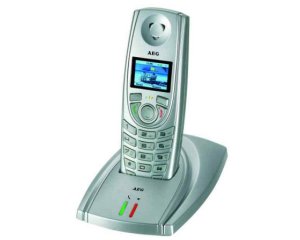Recente nieuwsberichten
Israëlisch Ministerie van Gezondheid waarschuwt voor draadloze DECT-telefoons
- Gegevens
- Geschreven: zondag 29 augustus 2010 18:06

In nieuwe aanbevelingen raadt het Ministerie van Gezondheid de burgers in Israël aan om het gebruik van DECT telefoons te beperken en in plaats daarvan ouderwetse telefoons te gebruiken met vaste aansluiting.
Het ministerie legt daarbij uit dat DECT telefoons de zelfde straling veroorzaken als gsm-antennes en gsm's. Men raadt aan de basisstations zo ver mogelijk van mensen te plaatsen, zeker niet in slaapkamers, kinderkamers of op het bureau waaraan men werkt.
De officiële verklaring van het Ministerie van gezondheid op haar website:
www.health.gov.il/pages/default.asp?maincat=46&catid=838&pageid=4408
Het bericht (door Google vertaald uit het Hebreeuws in het Engels) kunt u lezen op: translate.google.com/translate?hl=en&sl=iw&tl=en&u=http://www.ynet.co.il/articles/0,7340,L-3922931,00.html .
Daar vindt u ook het interview (met Googlevertaling in het Engels) met Professor Siegel Asedcaki, directeur van het Institute of Clinical Epidemiology bij het Gartner Sheba ziekenhuis en verantwoordelijk voor onderzoek bij het Ministerie van Gezondheid.
De kwaliteitskrant Haaretz bericht in de sectie Bussiness nieuws (22 juli 2010) als volgt:
Cordless phones emit as much radiation as cell phones
Auteurs: Amitai Ziv en Ronny Linder-Ganz
Cordless telephones emit as much radiation as cell phones, the Health Ministry stated yesterday in a warning to the general public.
The radiation emitted by cordless phones is non-ionizing, the same as cell phones. Still, the ministry says it's better to use regular landline telephones.
Non-ionizing radiation is a form of electromagnetic radiation that does not possess enough energy to cause ionization in matter, the Environmental Protection Ministry explains. Its wide spectrum includes ultra-violet light, visible light, infrared radiation, radio frequency and more.
''Information passes through the base unit and the handset the mobile unit - the actual phone in the form of radio waves,'' the ministry explains.
While studies into the potential hazards of cell-phone use are ongoing, on its website the Health Ministry counsels the public to err on the side of caution.
It also offers practical suggestions for careful use of cordless phones, but first and foremost advises that whenever possible - both at home and at work - use regular phones instead.
As for practical advice, the Health Ministry says that when using a portable phone of any type, it is better to use the speakerphone than to put the handset to your ear. Don't install the base unit of a cordless phone in the bedroom, children's room or office, where you spend much of your time. If the handset isn't in use, return it to the base unit (the charger ), because the whole time it's not on that base unit it's emitting radiation [Nota Beperk de Straling: zelfs met de telefoon op de basisstation blijft het basisstation enorm stralen].
The recommendations were consolidated by Prof. Sigal Sadetzki, director of the cancer unit at the Gertner Institute for Epidemiology and Health Policy Research at Sheba Medical Center. Sadetzki is the Israeli researcher who participated in the international Interphone study, which investigated the correlation between illness and the use of mobile phones. The study, published about two months ago, did not find that 10 years of cell-phone usage led to a greater chance of developing malignant or benign tumors in the brain, among users speaking less than 30 minutes a day. But it also concluded that ''heavy users'' - which means they speak at least 30 minutes a day on their mobile phones - do have a 40% greater chance of developing a brain tumor.
Why now?
So why would the ministry publish a warning about cordless phones now? There are no new studies out, says Sadetzki. But following the outcome of the Interphone study and the fact that Israelis are very heavy cellular users, ministry officials thought it appropriate to advise the public that cordless phones also emit non-ionizing radiation, just like cell phones.
''Not everybody realizes that while at home, people are exposed to the same non-ionizing radiation emitted by cell phones,'' Sadetzki says.
If anything, Stelian Gelberg, head of the noise and radiation abatement division at the Environmental Protection Ministry, claims exposure to cordless phones can actually be worse than cell phones.
Cell phone emissions vary according to distance from the antenna, he explains, while cordless phones emit the same intensity of radiation all the time, irrespective of their distance from the base unit. Mix in length of phone calls from the comfort of your home, and you wind up with greater exposure from cordless phones, he says.
Eurocom Digital Communications, which sells a variety of portable phones, said that all its Digital Enhanced Cordless Telecommunications (DECT ) phones meet international standards, including the ones set by the Communications Ministry. Their new phones also have an eco-mode function that adapts the transmission level from the base unit according to its distance from the handset and the conditions, thus reducing transmission strength by as much as 90%, the company added.
Voor het originele artikel zie:
www.haaretz.com/print-edition/business/cordless-phones-emit-as-much-radiation-as-cell-phones-1.303349
(Overgenomen van stopumts.nl)
|
Meer informatie over draadloze telefoons vindt u op onze DECT-pagina |

